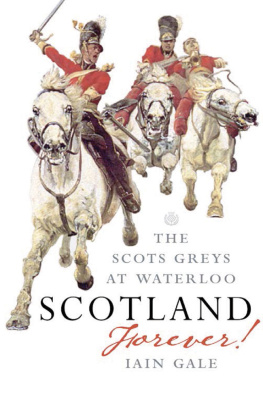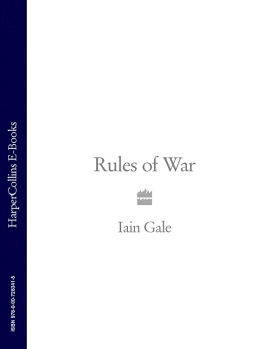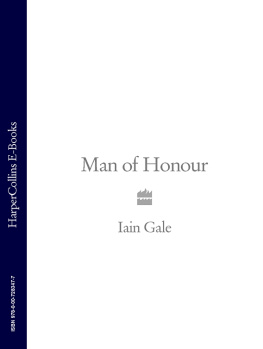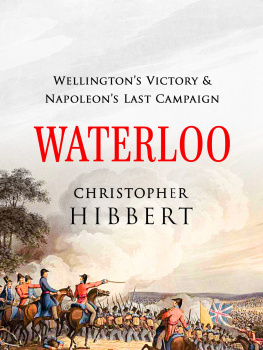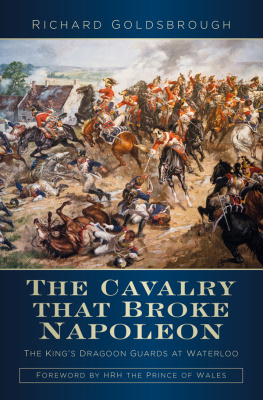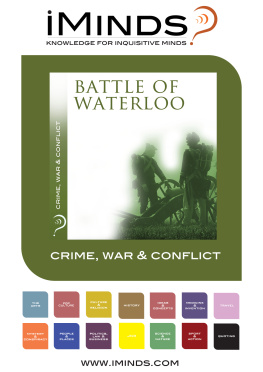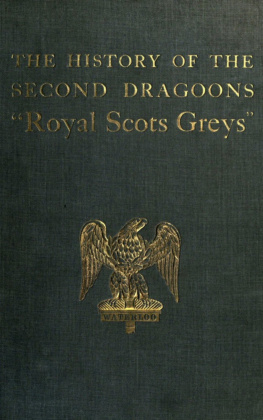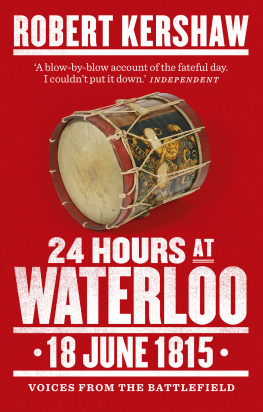SCOTLAND FOREVER!
Iain Gale, art critic, military historian, journalist and author has been studying the Napoleonic wars for the last forty years. He sits on the Scottish Committee of Combat Stress, the veterans mental health charity, and on the Scots Dragoon Guards Waterloo 200 Committee. He is currently writing the official regimental history of the Kings Own Scottish Borderers and is a militaria and fine art consultant for the auctioneers Lyon & Turnbull. He lives with his family in Edinburgh.

First published in 2015 by Birlinn Ltd
West Newington House
10 Newington Road
Edinburgh
EH9 1QS
www.birlinn.co.uk
Text copyright Iain Gale, 2015
Foreword copyright Brigadier Simon Allen
The right of Iain Gale to be identified as the author of this work has been asserted by him in accordance with the Copyright, Design and Patent Act 1988.
All rights reserved. No part of this publication may be reproduced, stored, or transmitted in any form, or by any means, electronic, photocopying, recording or otherwise, without the express written permission of the publishers.
ISBN: 978 1 84341 068 3
eISBN: 978 0 85790 855 1
British Library Cataloguing in Publication Data A catalogue record for this book is available from the British Library
Typeset in Sabon at Birlinn
Printed and bound in Great Britain by Bell & Bain Ltd
Contents
Foreword
by
Brigadier Simon Allen
Colonel, The Royal Scots Dragoon Guards

The Royal Scots Dragoon Guards is Scotlands senior regiment and her only regular cavalry. The Regiment retains the captured eagle of the 45th Regiment as the centrepiece of its cap badge and celebrates the Battle of Waterloo annually as one of two principal battle honours. The story of the battle has been recounted in numerous publications and examined from every angle. But the military history of this period is not always presented in such a way as to appeal to everyone, and it can appear dry to those unfamiliar with the significance of the events of nineteenth-century Europe.
In his lively and very readable book, military historian and novelist Iain Gale has enthusiastically and energetically embraced his subject to give us a very colourful description of the part played by the Scots Greys in the Battle of Waterloo, as it has come to be known. He brings to life the characters of this unfolding drama, with all their imperfections and foibles, in a way that makes them readily identifiable to readers in the twenty-first century. The privations and lifestyle of the Scottish soldier nevertheless remain a million miles away from the profligate excesses of the present day, reminding the reader of his good fortune in not having been born in those times.
Whether or not the charge of the Union Brigade turned out exactly as Wellington had hoped it would, there is little doubt that the actions of the Scots Greys contributed to victory over Napoleon and the end of his dreams of political liberalisation in Europe. Britain grew stronger and richer as a result, and the charge of the Greys became one of the many romantic tales to emanate from the battle and was recorded by various artists, most notably by Lady Butler in her painting Scotland Forever!.
Today the Regiment is based in its native Scotland in an essentially expeditionary role that would be familiar to its antecedents. The nature of warfare is constantly changing and yet, whatever the future may bring, I have little doubt that the Royal Scots Dragoon Guards will rise to the challenges, as did their forbears, bolstered by the justifiable belief that the Regiment remains Second to None.
Authors Note
This book has been in my head for some forty years. Ever since when, as a boy, I was taken to see Dino de Laurentiss spectacular film Waterloo in 1970, I have been fascinated (some would say obsessed) by the battle and campaign. I have written about it, studied the men who fought in it, refought it myself in miniature, visited the battlefield countless times and guided tours around it ranging from parties of schoolchildren to 32 serving US army officers on a TEWT. After all those years the key episodes still stand out. The defence of Hougoumont and La Haye Sainte, the great French cavalry charges against the chequerboard Allied squares, the assault of the Old Guard and, not least, the attack of dErlons Corps and its destruction by the redcoats of Pictons Division and the British heavy cavalry.
The charge of the Scots Greys at Waterloo is probably the most iconic of all images of the battle. Thanks to Lady Butlers hugely inspiring, if inaccurate, painting of 1881, Scotland for Ever!, it resonates in the public imagination every time the battle is mentioned.
It was early on in the course of my reading that I began to realise that Lady Butlers image was far from true to life. The Greys, it seems from contemporary accounts, did not charge. The fastest they got was a gallop. Yet, far from shattering my boyhood dreams of glory this only made me want to enquire further. How did they defeat the French? How could the Union Brigade of just 1,200 cavalry destroy an entire 15,000-man army corps? Was it true that they went too far and were in their own turn destroyed? Above all, who were they, these extraordinary Scottish horsemen?
Thanks to the recent research of Stuart Mellor in his invaluable book Greys Ghosts, we are closer to knowing just that. But I wanted to go a stage further: to put the men in the context not only of the charge but of the whole campaign and the later stages of the battle. What was the truth about the taking of the French eagle which forms the centrepiece of the regimental museum in Edinburgh Castle. And who was the man who had taken it, the hero, Ensign Ewart, who lies entombed on the Castle Esplanade?
Using memoirs, diaries and letters written by some of the men who were there, I was able to piece together the events of the four days of the campaign with more accuracy I believe than ever before. I would like to think that I may also have laid to rest some old rumours and arguments.
That said, however, no history of a battle is ever wholly correct and the reader must remain aware that even such apparently truthful primary sources as those used by me in this work still have their biases, prejudices and personal agendas.
I have had to be careful too not to over-embroider. As a writer of military fiction there is a tendency for me to invent dialogue and to put into the heads of the protagonists thoughts which I might suppose to be there.
I have endeavoured not to do either of these things. Ninety percent of the dialogue in this book is as it was reported in the original sources. All the rest is careful guesswork based upon my knowledge of the period.
Doubtless some readers will find fault in some details and for this I apologise. I am always happy to stand corrected and welcome all correspondence.
Lastly a word on the title. Scotland forever was, according to several sources, the cry given up as the Greys went to meet the French, and it was naturally taken up by the men of the 92nd Gordon Highlanders as the great grey horses pushed through their ranks to get at the enemy. The Caton-Woodville image of the leaping Highlander holding on to the dragoons stirrup must be taken with a pinch of salt. But it seems certain that in their haste to be on the French, some of the 92nd did try to hold the legs of the cavalrymen. Either way it is a fitting title for a book which commemorates perhaps the greatest feat to date of Scotlands only cavalry regiment.

